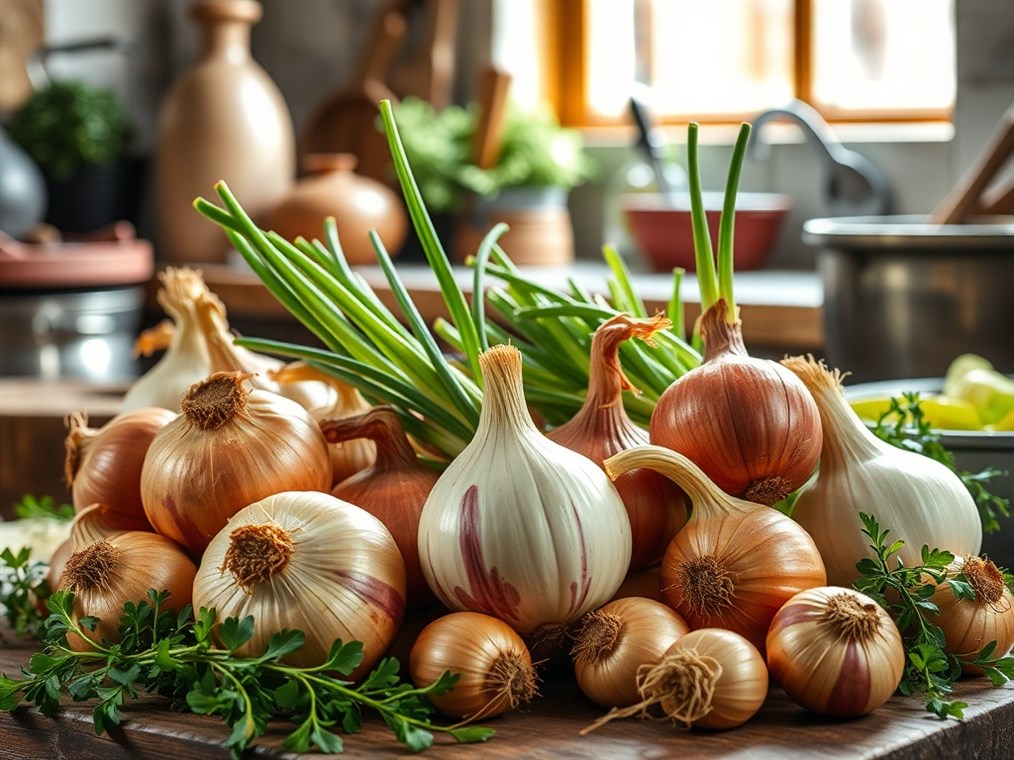The Sweet Secret of Spanish Onions: More Than Just a Vegetable
Okay, let’s talk Spanish onions. You might think, “An onion is an onion,” but trust me, these are special. They’re not just your run-of-the-mill yellow onion lurking in the produce aisle. Spanish onions have a story, a flavor, and a versatility that makes them a star in my kitchen – and hopefully soon, in yours too.
A Little History and What Makes Them Tick
As you probably guessed, Spanish onions come from Spain. They’ve been grown there for ages, and for good reason: they’re delicious! What sets them apart? It’s that mild, sweet flavor. Unlike some onions that make you tear up just thinking about them, Spanish onions are gentle giants. They thrive in sunny spots with good soil. While they started in Spain, you can now find them grown in places like Georgia and Texas in the US.
These onions are usually big and round, with a pretty golden skin. But the real magic is inside: crisp, white flesh that’s tender and sweet. The secret? They’re low in sulfur, which is what gives other onions that sharp, sometimes overpowering bite.
From Raw to Roasted: A Culinary Chameleon
The flavor of a Spanish onion is something else. Think sweet, a little smoky, maybe even a hint of something almost bitter, all wrapped up in a satisfying crunch. And when you cook them? Oh, man. They caramelize like a dream, turning into this rich, golden goodness that can transform any dish. That high water content I mentioned earlier? That’s the key to that incredible caramelization.
Honestly, the possibilities are endless. I love them raw in salads for a touch of sweetness, or grilled alongside burgers. Caramelizing them is a game-changer – they add this unbelievable depth to everything from French onion soup (a classic for a reason!) to a simple roasted vegetable medley. And if you’re feeling adventurous, dive into some traditional Spanish cooking. Paella wouldn’t be the same without them, and they’re essential in a good tortilla española or a refreshing gazpacho.
Good Food, Good For You
But it’s not just about the taste. Spanish onions are surprisingly good for you. They’re low in calories and fat, but packed with vitamins and minerals. Think of them as a delicious way to sneak in some extra vitamin C for your immune system, plus antioxidants to fight off those pesky free radicals. And don’t forget the fiber – your gut will thank you. I read somewhere that onions can even help regulate blood sugar and reduce inflammation. Pretty impressive for something so tasty, right?
Here’s a quick rundown of what you get in about 100g of Spanish onion:
- Calories: Around 42
- Carbs: A small amount (about 3% of your daily needs)
- Protein: Just under a gram
- Fiber: A decent boost (6% of your daily needs)
- Vitamin C: A good source (11% of your daily needs)
- A little calcium and iron, too!
Not All Spanish Onions Are Created Equal
Did you know there are different types of Spanish onions? The Valenciana onion is super sweet and mild – perfect for soups and salads. Then there’s the Fuentes onion, which has a bit more of a kick. I like to use those in salsas when I want a bolder flavor.
Keep ‘Em Fresh
One last tip: how you store your onions matters. Keep them in a cool, dry place with good airflow, away from direct sunlight. I usually use a basket. And don’t put them next to potatoes – they don’t play well together. If you treat them right, they’ll last for a few weeks.
The Bottom Line
So, there you have it: the sweet secret of Spanish onions. They’re more than just an ingredient; they’re a flavor enhancer, a nutritional powerhouse, and a culinary workhorse. Give them a try – I promise you won’t be disappointed! They might just become your new favorite onion, too.

